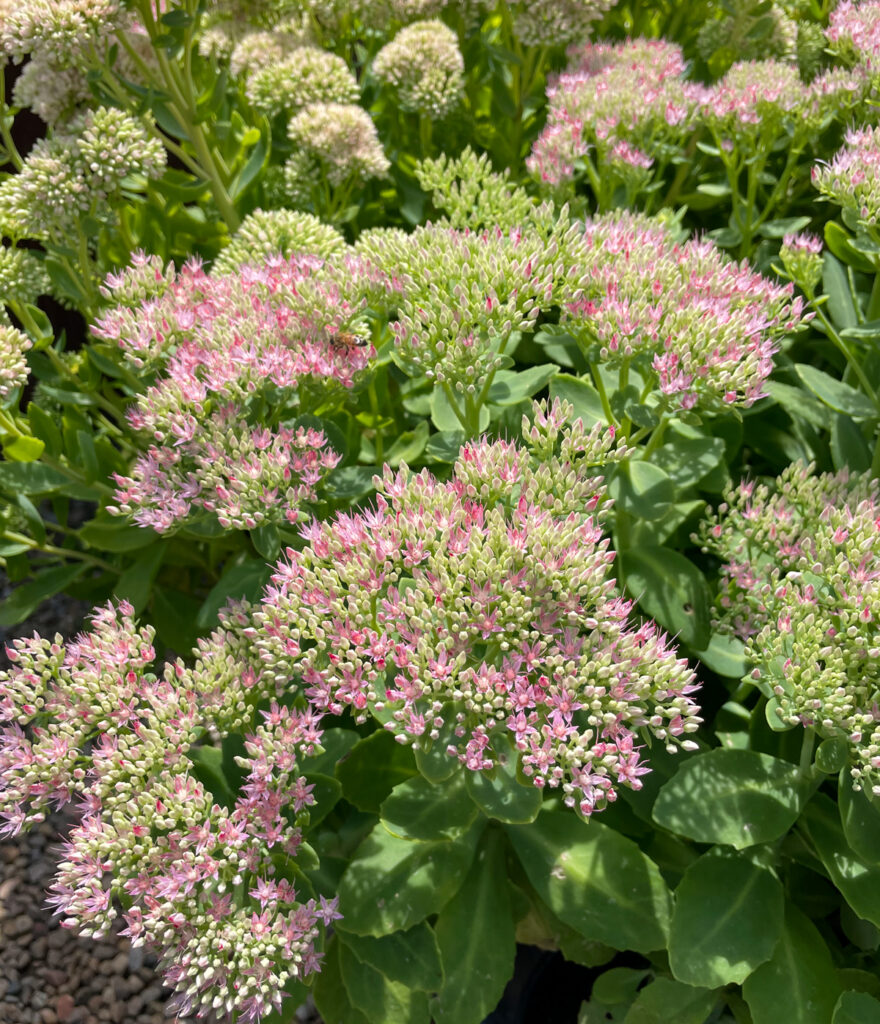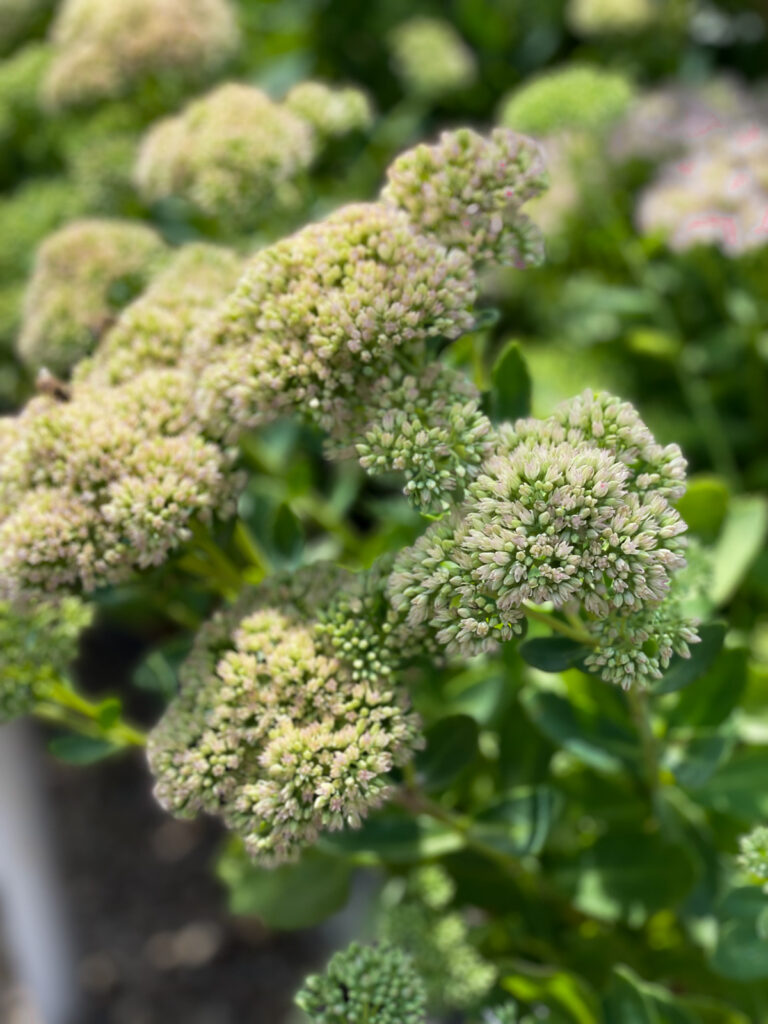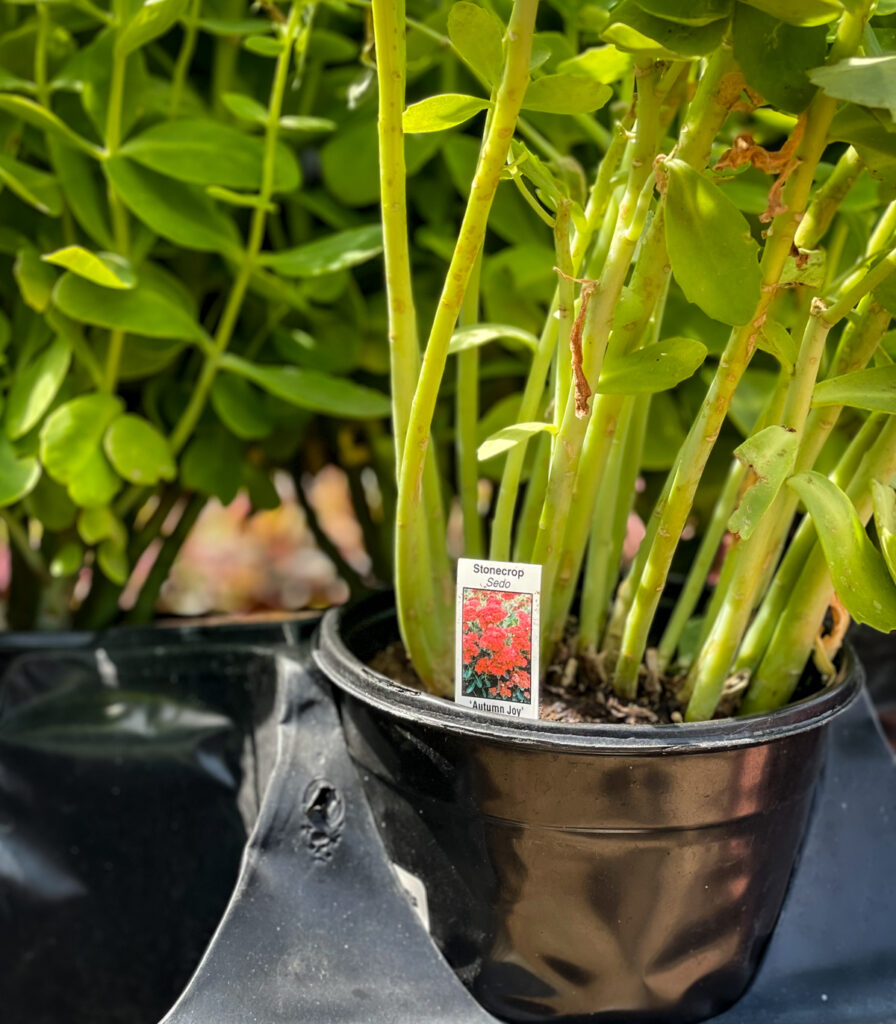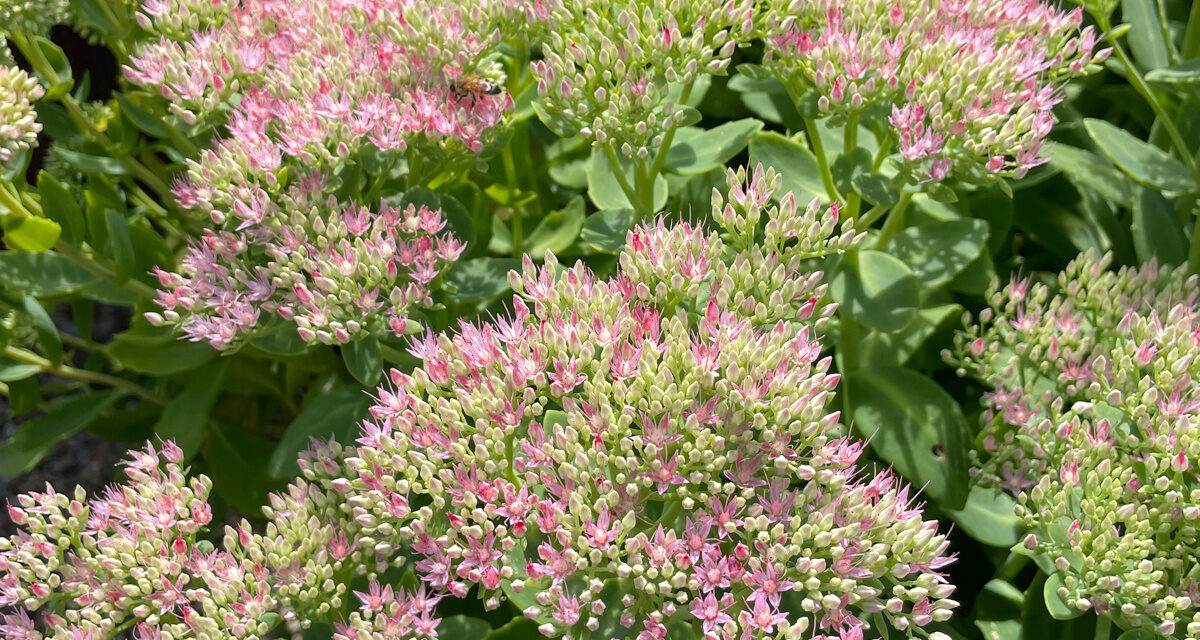Sedum Autumn Joy, the best classic stonecrop xeriscaping, remains one of the most well-known drought-tolerant plants for cottage gardens, New American gardens, or xeric gardens. Known botanically as Hylotelephium telephium, Autumn Joy comes from a family of plants originating in Japan. Designers like have used Autumn Joy in their world-renowned designs.
If you’re curious about Autumn Joy, you’ve come to the right place. We’ll cover everything there is to know about Autumn Joy, from what a mature plant looks like to how to care for this beautiful stonecrop. Whether you add Autumn Joy to your garden or not, you’ll at least be able to recognize it the next time you visit your local nursery.

Autumn Joy first gained popularity in Germany, where it’s known as Sedum telephium Herbstfreude (Herbst meaning “autumn” and freude meaning “joy”). In pagan times, Autumn Joy was used to determine if your love was true. Nowadays, it’s a backbone plant for xeriscaping because it relishes dry and stony conditions. We ranked it near the top of our list of the 10 best hardy succulents for landscaping.
Autumn Joy comes from the Sedum family, which is one of the 10 best succulents for beginners. As a hybrid of Sedum telephium and Sedum spectabile, this perennial stonecrop is also referred to by the following names:
- Orpine
- Livelong
- Frog’s-stomach
- Harping Johnny
- Life-everlasting
- Live-forever
- Orphan John
- Witch’s Moneybags
- Midsummer-men
Autumn Joy enjoys a moderate growth rate and thrives among many other xeric plants. This plant does best in USDA Zone 3 and CFIA Zone 2A climates. It grows in drifts with ornamental grasses and Rudbeckia.
Plants Similar to Autumn Joy
Several sedum varieties exist that look similar to Autumn Joy. It’s not until you see them together in person that you can tell the difference. Some nurseries stock these stonecrops instead of or in addition to Autumn Joy:
- “Autumn Fire”: These plants have stronger crowns and larger flower bunches than Autumn Joy. Autumn Fire plants also stay in bloom longer.
- “Autumn Charm”: Cream edges and serrated leaves characterize this plant.
- “Mr. Goodbud”: If you prefer purple instead of pink, Mr. Goodbud gets an earlier start in blooming than Autumn Joy.
- “Hot Stuff”: A mix between pink and purple flowers, Hot Stuff is the smaller, arguably more vibrant variant of Autumn Joy.
- “Iceberg”: Similar to Hot Stuff, Iceberg plants grow smaller but contain white flowers instead of pink.

Autumn Joy Characteristics
This stonecrop is classified as a herbaceous perennial, meaning the thick stems (known as the crown) with coppery red or pink broccoli-like blooms die back to the ground for winter. Other sedum varieties exhibit the same behavior. However, Autumn Joy leaves upright blooming stems in place with mahogany or rust-colored seed heads. The crown holds the soil in place to prevent erosion, while the snow melt provides the necessary moisture to the crown come spring.
Autumn Joy is one of the tallest stonecrops. With mature growth extending to 24 inches tall, this plant forms a well-behaved clump from the crown. This abundance of buds makes Autumn Joy one of the best plants for bees and butterflies from late summer into fall. The nectar held within the buds is an important food source for beneficial insects and pollinators. Some insects even use the hollow roots for winter shelter.
Autumn Joy Care
Like many stonecrop plants, Autumn Joy is relatively low-maintenance. This perennial flourishes in hot temperatures and prefers full sun, at least 6 hours daily. Autumn Joy can grow in sandy or gravelly soil where other plants may struggle. While you may want to give it a light spring fertilizing for exceptionally poor soil, Autumn Joy typically does well in these conditions.
Autumn Joy roots can conserve water like other stonecrop variants. However, good drainage is essential, as the fleshy roots can rot if the moisture doesn’t drain quickly enough. Autumn Joy plants only need a light watering every two weeks.
Space Autumn Joy plants at least 1 foot apart. You can cut the stems back in late spring to limit height and promote bushier growth. While you can foster Autumn Joy plants inside, they do best outdoors, where they can take full advantage of the bright sunshine.
Autumn Joy is one of the three top Sedum variants for border varieties for your perfect butterfly garden. You can easily propagate Autumn Joy from stem cuttings or portions of the fleshy roots. Each piece will foster a new plant that matures in three to four seasons.

Common Autumn Joy Issues
Like all plants, Autumn Joy sustains the occasional bug bite here and there. A reader named Kathryn from Vermont wrote in with this question:
I have discovered an Autumn Joy plant, long established, with some browning on the tips of leaves and a few curled leaves with a small green worm inside. Can you help?
If you find little green worms wrapped in Autumn Joy leaves that look brown or curled, it’s not an immediate cause for worry. Butterflies and moths often feed on garden plants without affecting the plant’s growth. The green worms you see might just be butterflies or moths in the making.
If you’re curious, you can foster the small green worms to see their adult form. You can also take a sample to your local horticulturist or agriculture inspector for help in identification. Autumn Joy plants are hardy enough that a few nibbles chalk up to nothing more than a nuisance.
Summary
Autumn Joy is a herbaceous perennial stonecrop that’s low-maintenance, beautiful, and often the center of many a butterfly garden. Though care for Autumn Joy resembles that of a cactus, the pink buds that bloom in late autumn are much easier on the eyes. Visit your local nursery to view Autumn Joy in person. You might even decide to add it to your home garden!


